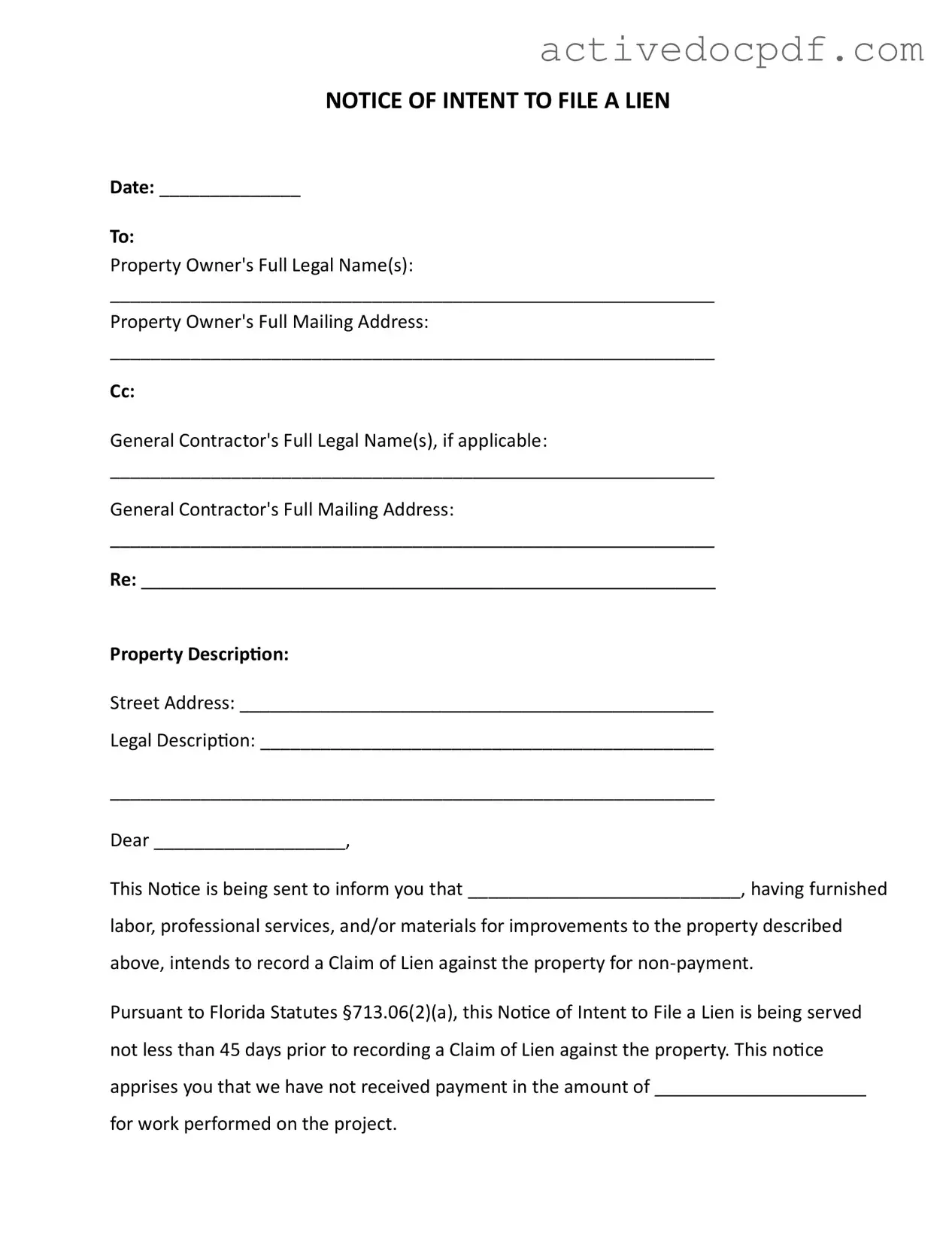The Intent To Lien Florida form serves as a formal notice to property owners that a lien may be placed on their property due to non-payment for services rendered or materials supplied. This document is typically sent by contractors, subcontractors, or suppliers who have not received payment for their work. The notice informs the property owner of the outstanding amount and the intention to file a Claim of Lien if payment is not made within a specified timeframe.
What are the requirements for sending the Intent To Lien notice?
To properly send the Intent To Lien notice, the following requirements must be met:
-
The notice must be sent at least 45 days before filing a Claim of Lien.
-
The notice should include the full legal names and addresses of the property owner and, if applicable, the general contractor.
-
The notice must specify the property description, including the street address and legal description.
-
It should clearly state the amount owed for the services or materials provided.
What happens if the property owner does not respond to the notice?
If the property owner fails to respond or make payment within 30 days of receiving the Intent To Lien notice, the sender may proceed to record a Claim of Lien against the property. This action can lead to foreclosure proceedings, meaning the property could be sold to satisfy the debt. Additionally, the property owner may incur attorney fees, court costs, and other related expenses.
Can a property owner dispute the claim made in the Intent To Lien notice?
Yes, a property owner can dispute the claim made in the Intent To Lien notice. It is advisable for the property owner to communicate with the sender as soon as possible to resolve any discrepancies. If there is a legitimate reason for non-payment, discussing the issue may lead to an amicable resolution without the need for further legal action.
Is there a way to avoid a lien being placed on the property?
To avoid a lien being placed on the property, it is crucial for the property owner to respond promptly to the Intent To Lien notice. Arranging payment for the outstanding amount or reaching a satisfactory agreement with the sender can prevent the recording of a lien. Additionally, ensuring that all contractors and suppliers are paid on time can help avoid similar situations in the future.
